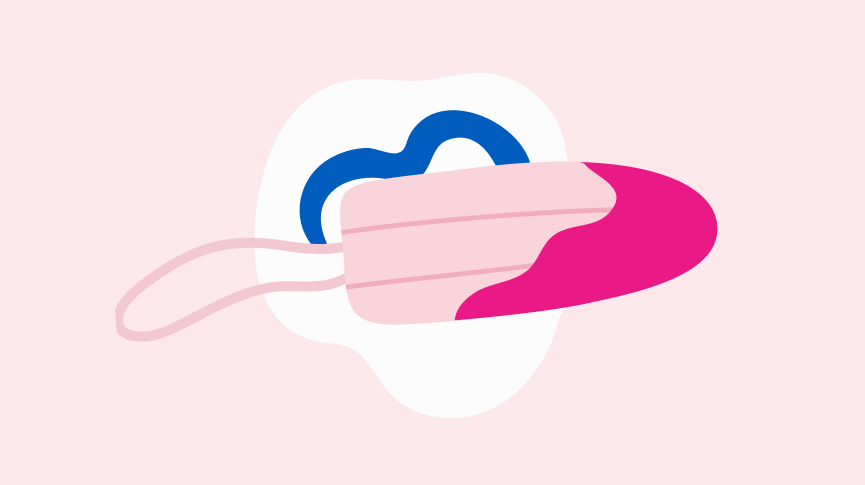Thousands and thousands of girls internationally use tampons, pads, and different menstrual merchandise each month. Nonetheless, latest research have revealed that tampons could comprise sure probably poisonous chemical substances and heavy metals linked to a spread of well being issues.
That being mentioned, additional analysis is required to find out the long-term influence tampons containing such substances may have on our well being.
In a latest research, researchers discovered “measurable concentrations” of 16 totally different heavy metals throughout 14 totally different natural and nonorganic tampon manufacturers. This included poisonous metals like lead, arsenic, and cadmium. The very best ranges of metals discovered have been calcium and zinc.
The research states that:
Lead concentrations have been larger in non-organic tampons whereas arsenic was larger in natural tampons,” with neither class displaying “constantly decrease concentrations of all or most metals.
Whereas the degrees the researchers discovered have been small, extended publicity to any quantity of lead “heightens the dangers of growing neurodegenerative, cardiovascular, or renal ailments,” in line with the European Atmosphere Company.
This isn’t the primary time tampons and different menstrual merchandise have discovered themselves underneath the microscope for potential well being dangers. Previously, researchers discovered that menstrual merchandise, together with tampons, could comprise chemical substances like perfluoroalkyl and polyfluoroalkyl substances (PFAS), plasticizers (or phthalates), and risky natural compounds (VOCs).
Such chemical teams are emitted as fuel or fragrances from shopper merchandise similar to scented menstrual aids. These chemical teams could have an effect on the physique’s endocrine system, probably disrupting its regulation of metabolism, sexual improvement, temper, blood sugar, and extra.
A few of the metals discovered within the tampons – similar to calcium, copper, iron, and zinc – are secure in low quantities, however could have a adverse impact on an individual’s endocrine capabilities if collected over time.
Can Poisonous Substances Soak up Into the Physique?
To this point, scientists are uncertain about whether or not heavy metals can leach from tampons into the physique. There haven’t been any conclusive research (but) in regards to the potential influence of tampons on well being, and the subsequent step for researchers is to determine if the metals and plastics can leach from the tampon into the physique.
A spokesperson for the US Meals and Drug Administration, which regulates menstrual merchandise like tampons, advised CNN:
The research was additionally unable to find out whether or not any metallic, even when launched into the physique, could be absorbed into the vaginal lining and subsequently into the bloodstream.
How Metals And Chemical compounds Get Into Tampons
So, how do detectable ranges of metals and different poisonous substances get into tampons? The reply lies within the soil and water.
Most tampons are fabricated from cotton or a cotton-rayon mix. Rayon is a semi-synthetic fiber constituted of wooden pulp. All of those supplies are constituted of crops, which simply take in metals like arsenic, lead, and different heavy metals, that are pure components and metals present in soil, water, air, and the earth’s crust.
The soil and water of many elements of the world are additionally closely contaminated with chemical substances used to supply a variety of plastic merchandise we use in our on a regular basis lives. PFAS and different chemical substances enter the soil, air, and groundwater from shopper merchandise discarded in landfills, human waste, and byproducts from fluorochemical manufacturing crops.
What Can I Use As a substitute?
Contemplating that PFAS and different poisonous chemical substances have additionally been discovered in menstrual pads and interval underwear, the common menstruating shopper could also be searching for different choices.
Menstrual cups, that are small, versatile cups inserted into the vaginal canal to gather menstrual blood, have NOT been proven to comprise PFAS, making them a secure various to tampons and pads.
They’re fabricated from medical-grade supplies like silicone, pure rubber, thermoplastic elastomers, or latex, which signifies that there isn’t the priority of the supplies degrading or leaching into your physique. Plus, they’ll maintain as much as 3 times as a lot fluid as a traditional tampon.
Not solely are menstrual cups considerably extra sustainable than different interval merchandise (the reusable cups can final years) they could additionally scale back your publicity to the poisonous chemical substances and metals present in tampons. Another advantages of menstrual cups over tampons or menstrual pads embody:
- Decreased odor
- Not worrying about leakage – You possibly can safely put on the cup for longer durations of time earlier than having to alter it out or being concerned about leakage, as menstrual cups maintain extra liquid than tampons
- Value-effectiveness – Tampons and pads price a mean of $50-$150 per yr. A menstrual cup solely prices between $20-$40, and might final from six months to 10 years, relying on the model. That’s a major amount of cash saved.
- Environmental sustainability – Tampons and pads find yourself in landfills, the place the plastics take years to degrade and should find yourself leaching into the soil.
- Decrease danger of poisonous shock syndrome – Not solely are menstrual cups fabricated from safer supplies than different interval merchandise, in addition they decrease your danger of growing poisonous shock syndrome as a result of they gather reasonably than take in blood. Poisonous shock syndrome is a uncommon bacterial an infection which will outcome from improper tampon use.


